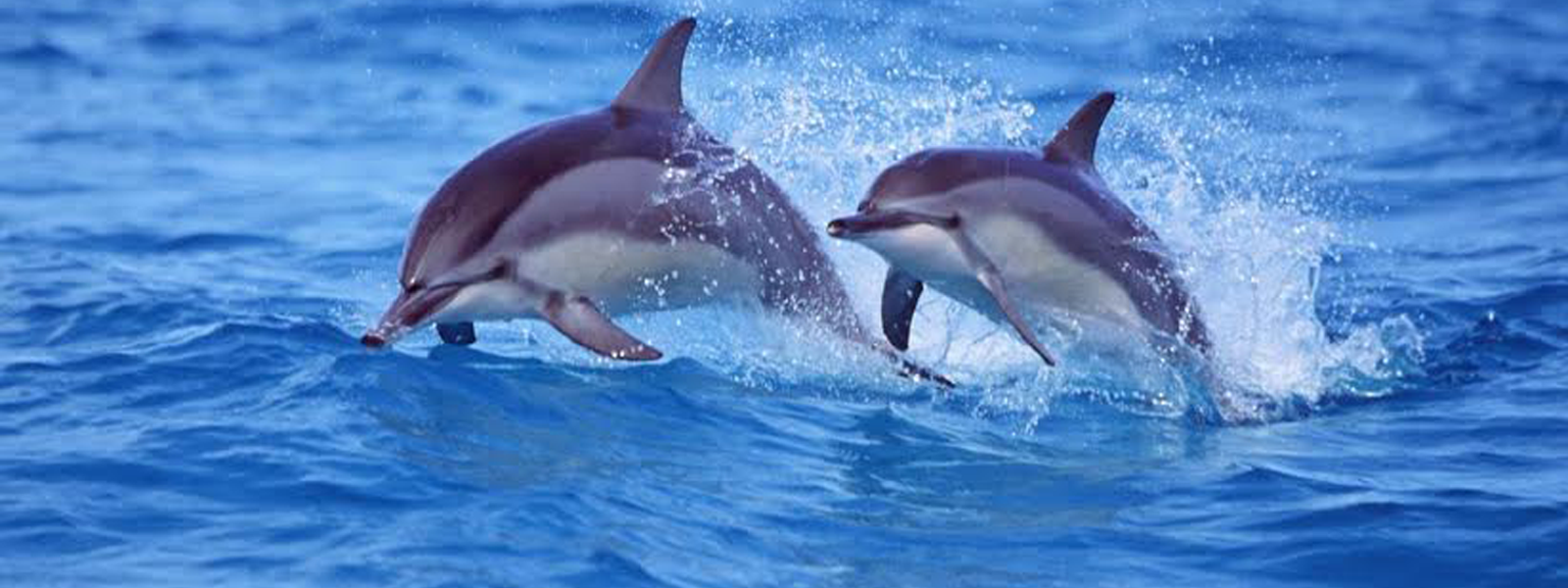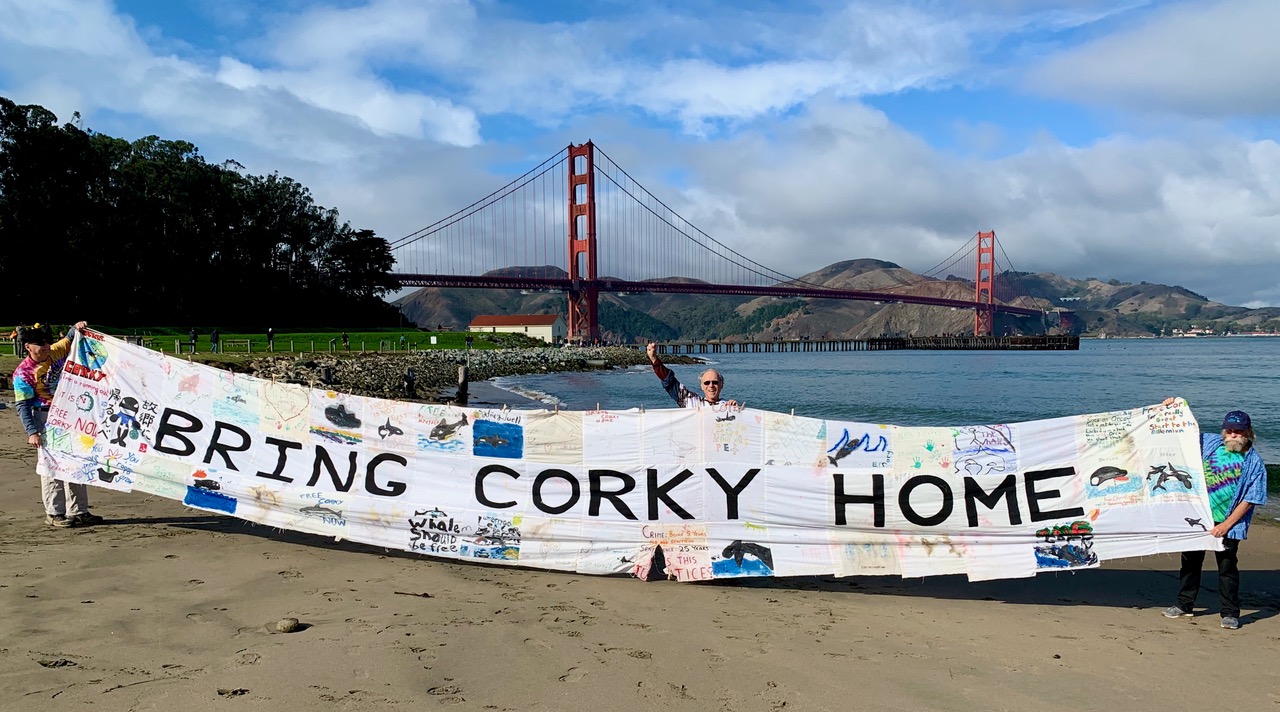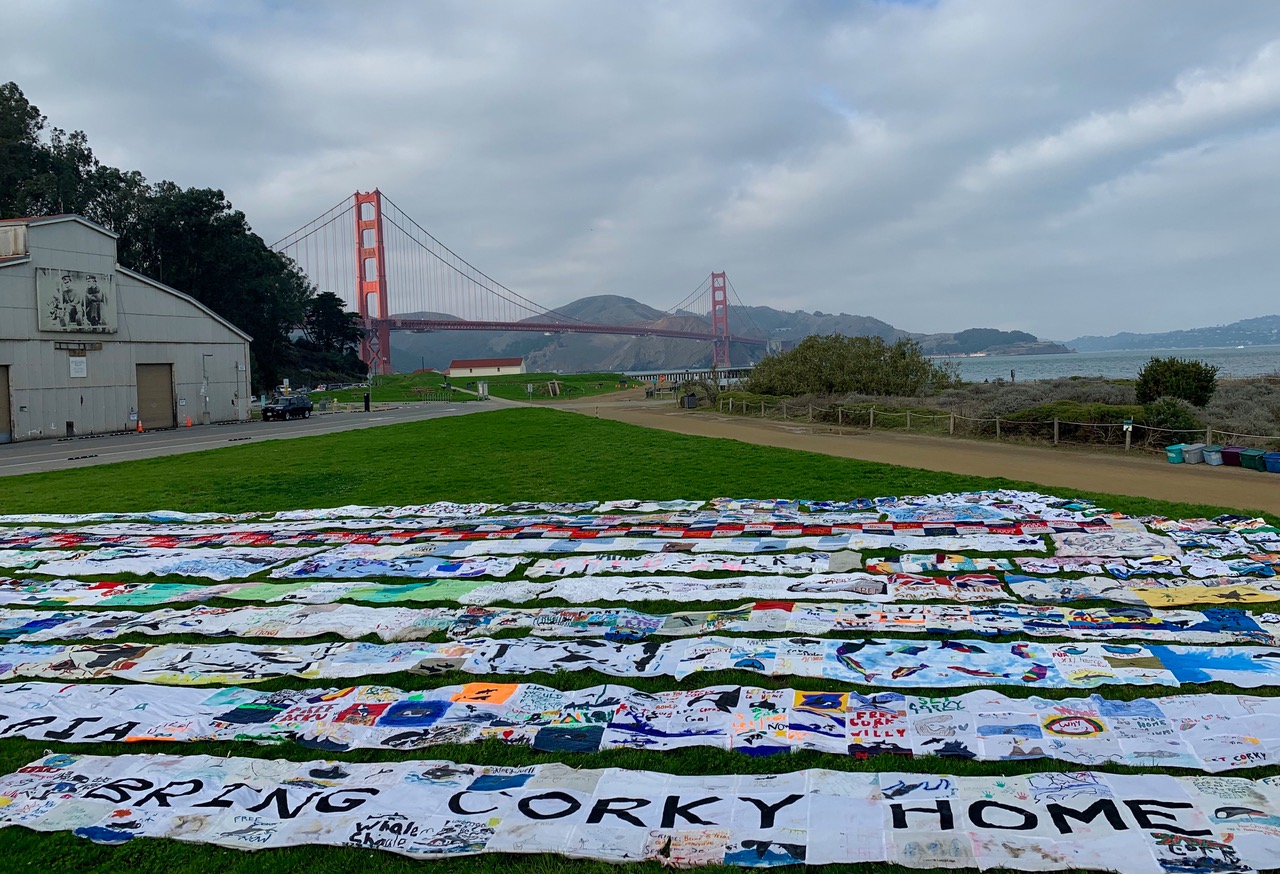

Most captive orcas die at an early age due to stress, boredom, and other serious problems associated with keeping large animals in small concrete containers.
But one orca has managed to survive: A female named Corky believed to be about fifty-four years old. (Some wild female orcas may live as long as ninety years or longer, so Corky, while old for a captive, is somewhat middle-aged as an orca.) Corky has been in captivity longer than any other whale, having been caught a year before Tokitae/Lolita, and now lives in the Miami Seaquarium.
Corky was thought to be about four years old when she was captured in 1969. Her pod is known by scientists as the A5 Pod living in the waters of British Columbia, where she was captured in Pender Harbor and sent to the old Marineland of the Pacific in Los Angeles. Several near and distant relatives of Corky – some relatives that she would have known in her short life among them – are still alive, and Corky would be able to communicate with her pod if given the chance.
Corky moved to SeaWorld San Diego in 1987, when Marineland was bought out by the SeaWorld company (at that time owned by publisher Harcourt Brace Jovanovich). She was accompanied by another male orca also caught from the A5 Pod, named Orky, but Orky died a year and a half after the move to San Diego, leaving Corky alone in the tanks with other unrelated orcas.
Dr. Paul Spong and activist Michael Reppy have a vision: A seaside sanctuary where Corky can be retired to live the rest of her life in her home waters, able to communicate with her relatives and no longer having to do tricks for dead fish.
Dr. Spong is the founder of OrcaLab on British Columbia’s Hanson Island. There he and his wife Helena Symonds have studied orcas for decades, recording behaviors and vocalizations of the resident orcas.
He writes: “Now, there’s another chance for Corky. A retirement home/sanctuary is being prepared for her in Double Bay on Hanson Island, not far from OrcaLab and Dong Chong Bay where the orca Springer was returned to her family in 2002. There, Corky will be cared for by people she knows well, SeaWorld staff. She will swim in ocean water again, and though still confined her family will be able to visit. What will happen after their reunion is unknown? There are of course challenges ahead, the principal one being Sea World’s cooperation, but it can happen and I believe it will.”

Dr. Spong’s activities through the years have included helping put together the Free Corky Banner, a massive set of free-form panels. The Corky Banner began in the mid-1990s and grew to more than two kilometers long. It is composed of individual panels sewn together, made by more than 15,000 children from at least 25 countries around the world.

Michael Reppy is an activist who has worked for years on the protection of marine mammals. A volunteer with the International Marine Mammal Project of Earth Island Institute and an accomplished sailor, he recently purchased a former sport-fishing lodge, near OrcaLab. Michael has high hopes that the lodge, when rebuilt, will form the nexus of a seaside sanctuary for Corky in Double Bay on Hanson Island.
The idea of a sea sanctuary is similar to existing sanctuaries for other wild animals that cannot be released back into the wild – a protected area for elephants and primates, for example, where the animals are no longer required to do circus tricks, and can instead just be animals in as natural a setting a possible. In the proposed Hanson Island sanctuary, Corky would be fed by humans and receive veterinary care, but would not have to do tricks or be confined to a small concrete tank.

There are critics, of course, of the sanctuary idea. SeaWorld itself adamantly denounces sea sanctuaries as dangerous for marine mammals despite being located close to the sea pens maintained for decades for the Navy’s bottlenose dolphins. Needless to say, SeaWorld’s objections amount to fears that sea sanctuaries could replace their cash cow captive orca and dolphin shows.
Even some opponents of keeping orcas in captivity, however, believe Corky may be too old and frail to be moved to a new location, quite different from the life she has led for more than fifty years. However, Corky continues to perform at SeaWorld San Diego, so her health may be pretty robust. Health records for their captive orcas are a closely guarded secret at SeaWorld, something the International Marine Mammal Project of Earth Island Institute and other organizations are currently challenging in court.
Dr. Spong notes: “We believe that Corky must be incredibly strong to have survived the stresses of captivity for so long and that she deserves a chance to swim in the ocean she was born into, and to meet her family again!”
- A new documentary is being produced by filmmaker Christine Caruso about Corky – for more information, go to its Facebook Page.
- For information on the proposed sea sanctuary for Corky on Hanson Island and how you can help, email Michael Reppy (mreppy@dolphinspirit.org) or go to his web page.